
20 minute read
NATURAL HAIR LOVE
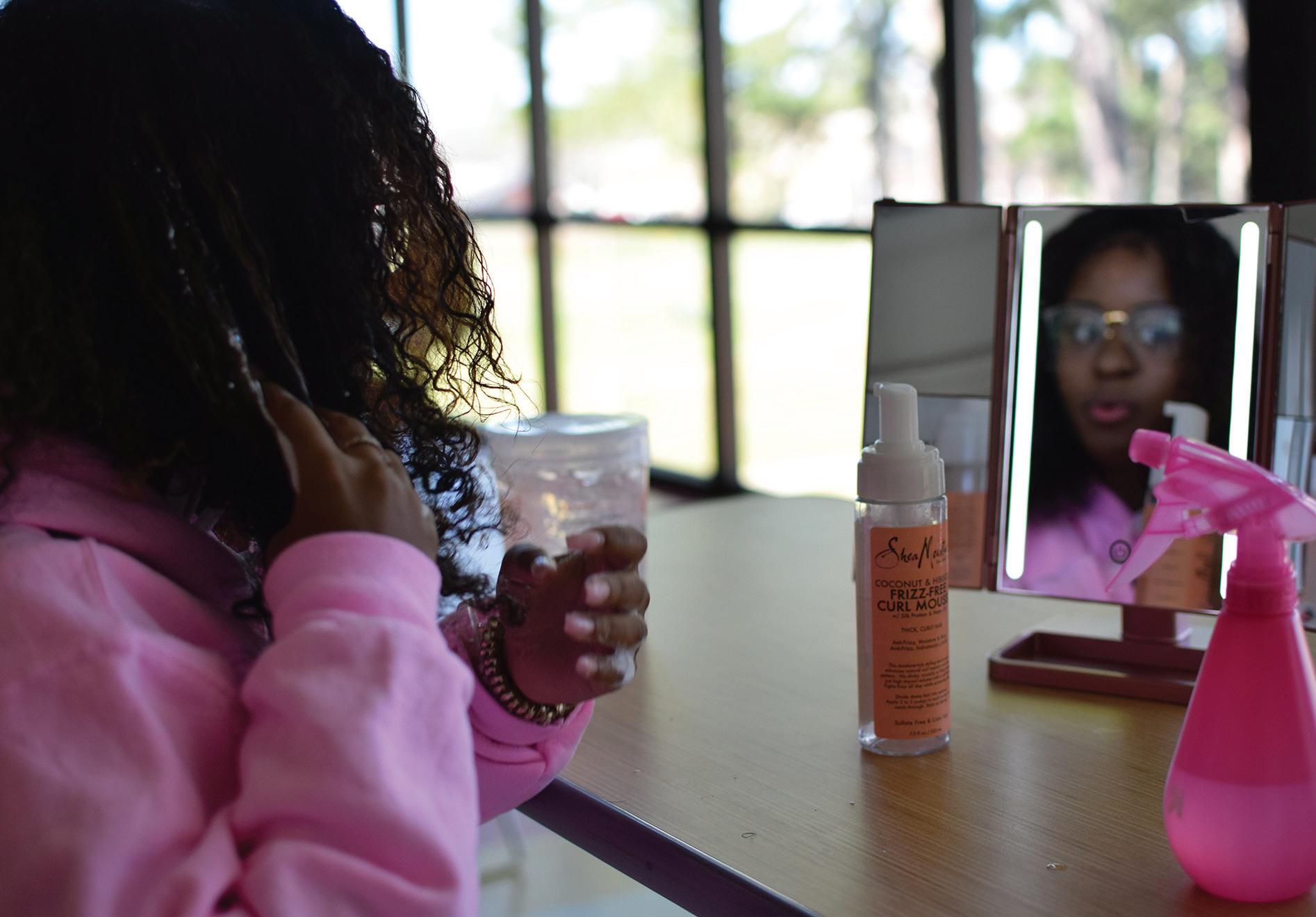
Advertisement
EMBRACING HAIR EMBRACING HAIR EMBRACING HAIR EM
EMBRACING HAIR EMBRACING HAIR EMBRACING HAIR EM
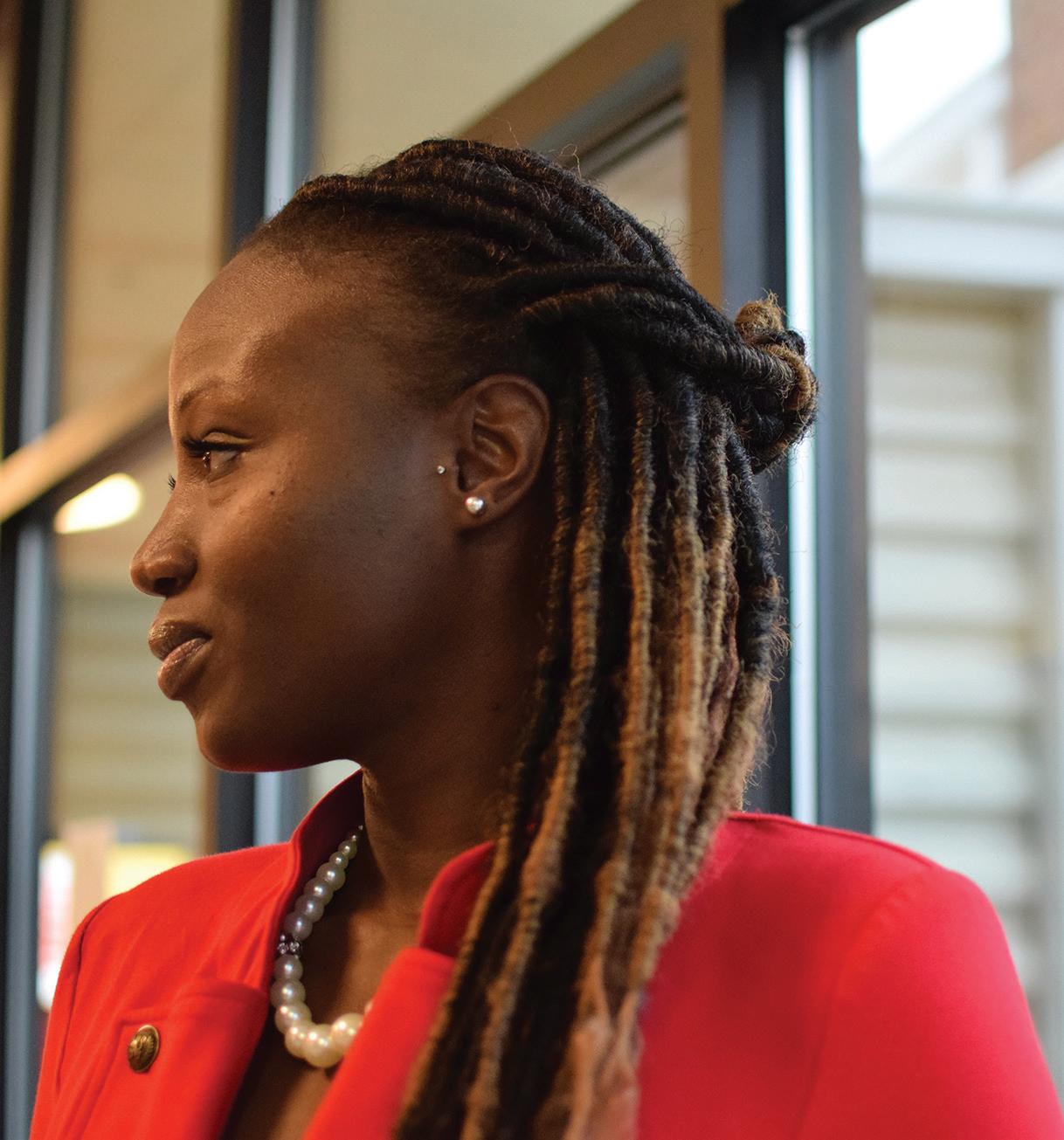
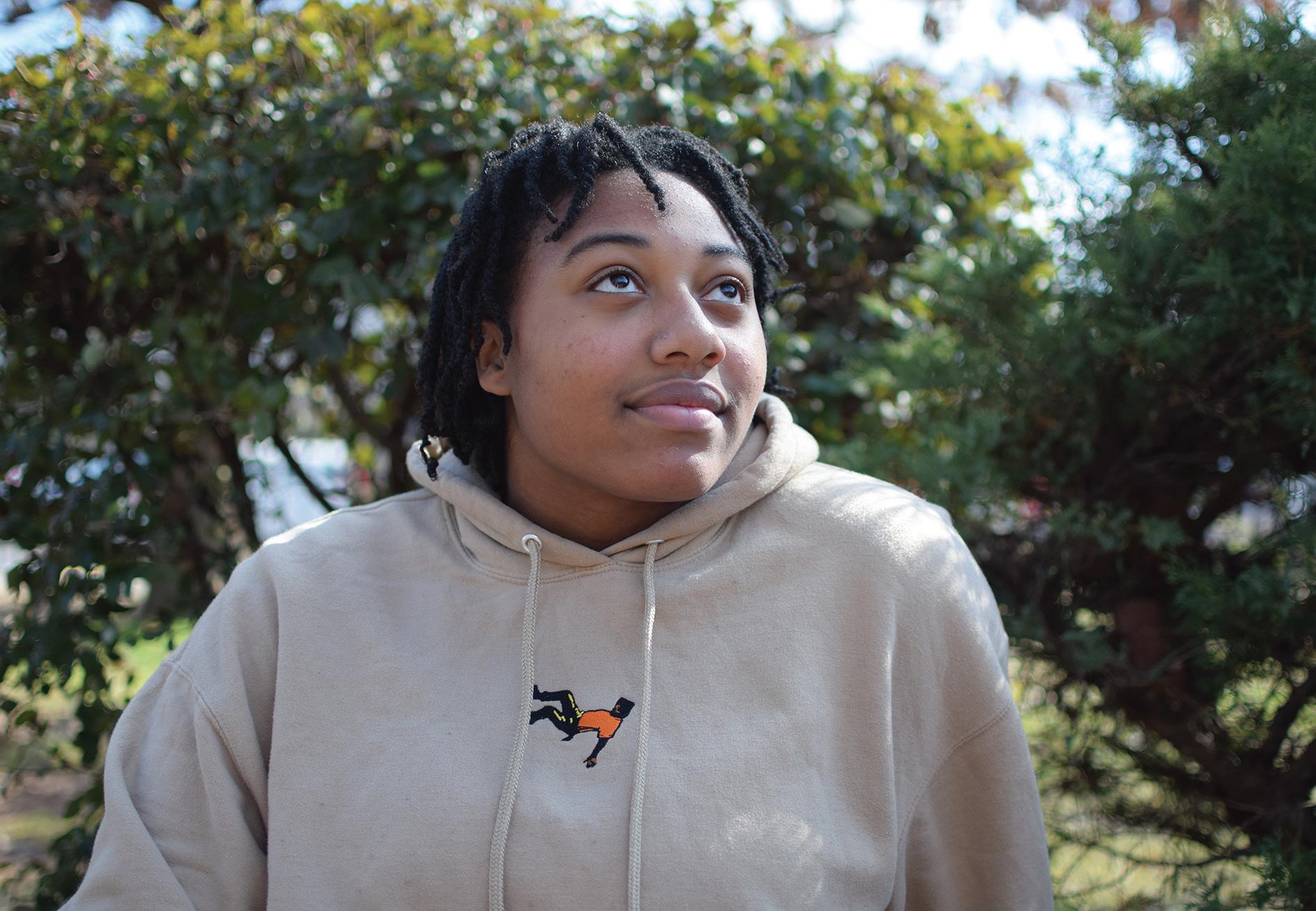
EMBRACING HAIR EMBRACING HAIR EMBRACING HAIR EM
EMBRACING HAIR EMBRACING HAIR EMBRACING HAIR EM
The natural hair movement has changed a lot since the 1960s, and these changes have greatly affected African American women.
According to CurlCentric, the natural hair movement is “focused on encouraging women with African ancestry to celebrate and enjoy the natural characteristics of their kinky, curly hair texture.”
The discrimination against natural hair began during slavery when slaves were forced to emulate the apperance of the slave master’s wife.
“Slaves who worked in the ‘big house’ would wear wigs like their owners and their wives, while others shaped their own hair to look like (a wig),” George Washington University researcher Amber Henderson said.
It wasn’t until 1905 that the first natural hair products were introduced, according to the NaturAll Club. At this time, Madam C.J. Walker began selling her line of Black hair care products.
The natural hair movement emerged in the 1960s during the Black Panther Movement and has evolved significantly since then.
“The natural hair movement had a lot to do with Black identity and cultural identity, particularly in the context of White supremacy,” North Carolina Central University Professor Dr. Yaba Blay said in an STORY BY SAMAIYAH RA’AID Viewpoints Staffer LAYOUT BY NATALIE RIPPS Variety Editor PHOTOS BY LUNA REICHERT Social Media Coordinator
interview for Essence Magazine.
The natural hair movement was a prominent example of acceptance among Black women since, in some environments, they were finally encouraged to embrace their natural hair.
“(Natural hair) became a reflection of political and cultural progressiveness as well as self-esteem among Black people,” New African Magazine editor Regina Jane Jere-Malanda said.
However, when Clarke Central High School special education department teacher Stacey Scott was growing up, she didn’t have good accessibility to hairstylists or products for her hair type.
“I went to school in Greenville, North Carolina, so there wasn’t a big natural hair movement. I would probably have to drive 20 minutes to get to Sally’s (Beauty Supply Store),” Scott said. “Even finding a beautician that could do my hair or felt comfortable doing my hair was difficult.”
CCHS guidance counselor Ashlee Perry also had tough experiences with her natural hair.
“I got picked on often because my hair was more kinky or nappy, as they used to be called. I spent hours trying to find ways to get it styled,” Perry said. The natural hair movement has changed and shifted since the creation of the internet which has given an immense amount of resources to people with natural hair.
“The internet let us connect with other naturals across the globe to share tips and new product recommendations we may have had no idea about before,” creator of the blog UKCurlyGirl Shannon Fitzsimmons said.
Scott believes the evolution of the natural hair movement is very beneficial for those pursuing natural styles today.
“I think (acceptance of natural hair) is so beneficial. In the Black hair movement, there’s no norm. It’s (not just) trendy now. It’s in the mainstream. You can find Black hair products in Target, Walmart (or) Ulta beauty, and it’s not for just one type of Black hair,” Scott said.
However, CCHS sophomore V’shaunah Bradford believes there still is not adequate access to natural hair products.
“I don’t think there’s a lot (of access to natural hair products). It’s definitely better than it was, but there’s still only a select few (products) that (are) actually meant for our hair texture,” Bradford said. CCHS freshman McKenna Ezekiel says she has always loved her natural hair and has had mainly
Left: TAMING THE TRESSES: Clarke Central High School freshman McKenna Ezekiel sits at a table and does her hair on Jan. 27. Ezekiel believes her journey with hair has been positive. “I feel like it is really important for people to embrace their natural hair. Especially women of color,” Ezekiel said. Photo by Luna Reichert
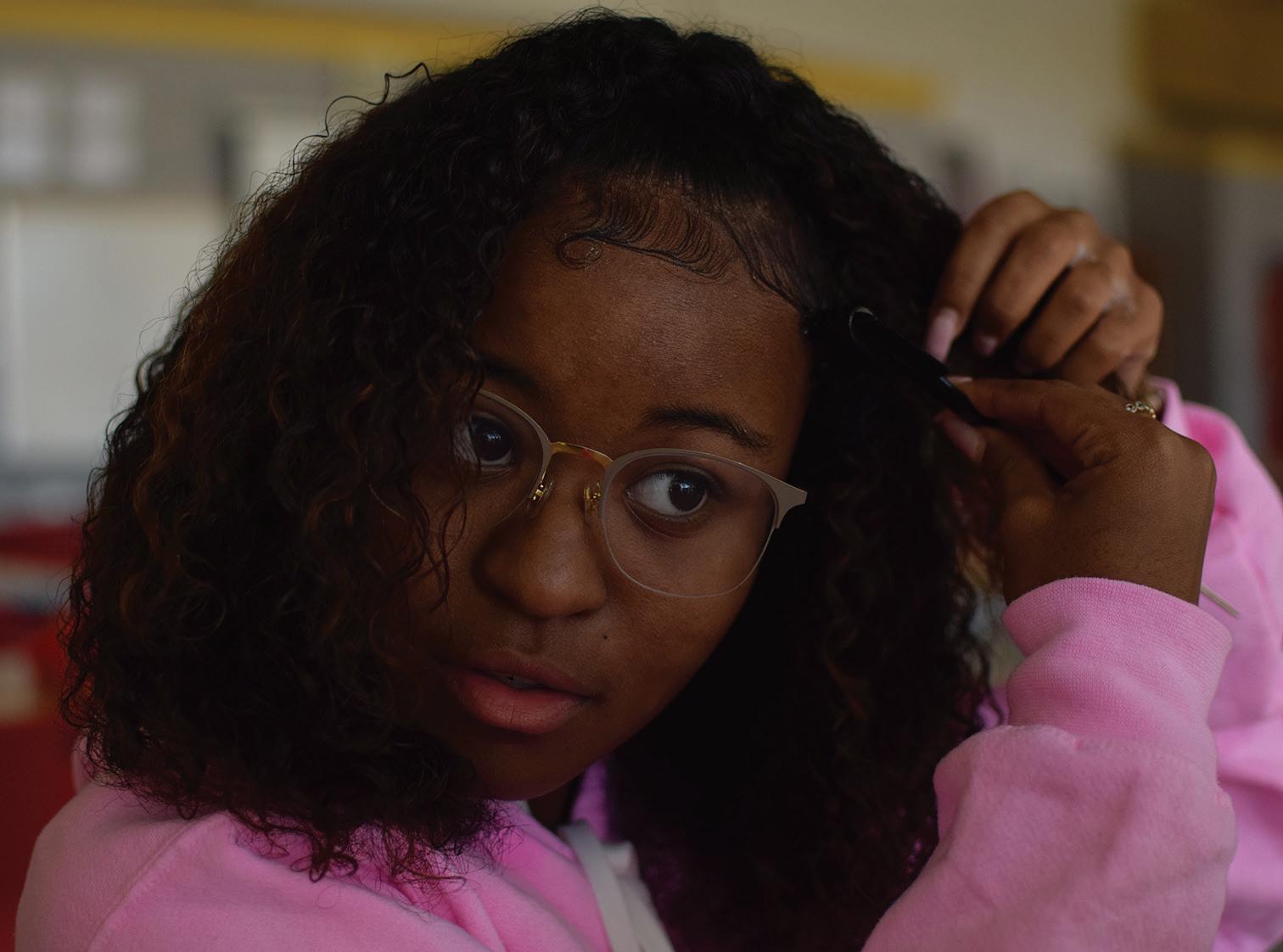
Top right: LOOKING TO THE NATURAL: Clarke Central High School special education teacher Stacey Scott stands outside of CCHS on Jan 27. Scott appreciates the personal and cultural aspects of the natural hair movement. “I think (natural hair) is beautiful and great to express yourself to not only represent who you are, but your culture and your heritage,” Scott said. Photo by Luna Reichert
Immediate right: LUSCIOUS LOCS: Clarke Central High School guidance counselor Ashlee Perry stands in Mell Lobby on Jan 27. Perry loves her dreads and feels they have made her love her natural hair. “I just have to continue to encourage myself to love (my locs) the way that they are and just to trust the process,” said Perry. Photo by Luna Reichert
Far right: NATURAL OUTLOOK: Clarke Central High School junior Anaiah Aziabor sits in the flowerbed outside of the New Gym on Jan 30. Aziabor has had a long journey to accepting her natural hair. “I feel more confident with my natural hair than I do with my hair straightened or any other style,” Aziabor said. Photo by Luna Reichert
-- Stacey Scott, CCHS special education teacher
good experiences with it.
“I love my hair how it is, and I feel like if anybody else doesn’t love my hair how it is, they don’t need to worry about it,” Ezekiel said.
For CCHS junior Anaiah Aziabor, finding love for her hair wasn’t as simple. At a young age, she was ingrained with prejudices against her natural hair. “When I was younger, like in preschool, there was this group of girls who would make fun of me because my hair was shorter. It was just a really big shrinkage thing,” Aziabor said. “They would always wear ponytails, and they were like, ‘Oh, you can’t do this.’”
For Aziabor, it took a long time to learn to love her hair and to accept it as it is.
“In ninth grade, I went to a new beautician, and I asked her to just do my simple twists. She did this weird style with it, and I was like, ‘I don’t like it,’” Aziabor said. “I went home and I took my hair out and I was like, ‘What am I gonna do?’ and I saw how pretty the twist out was.”
Although there has been progress with the
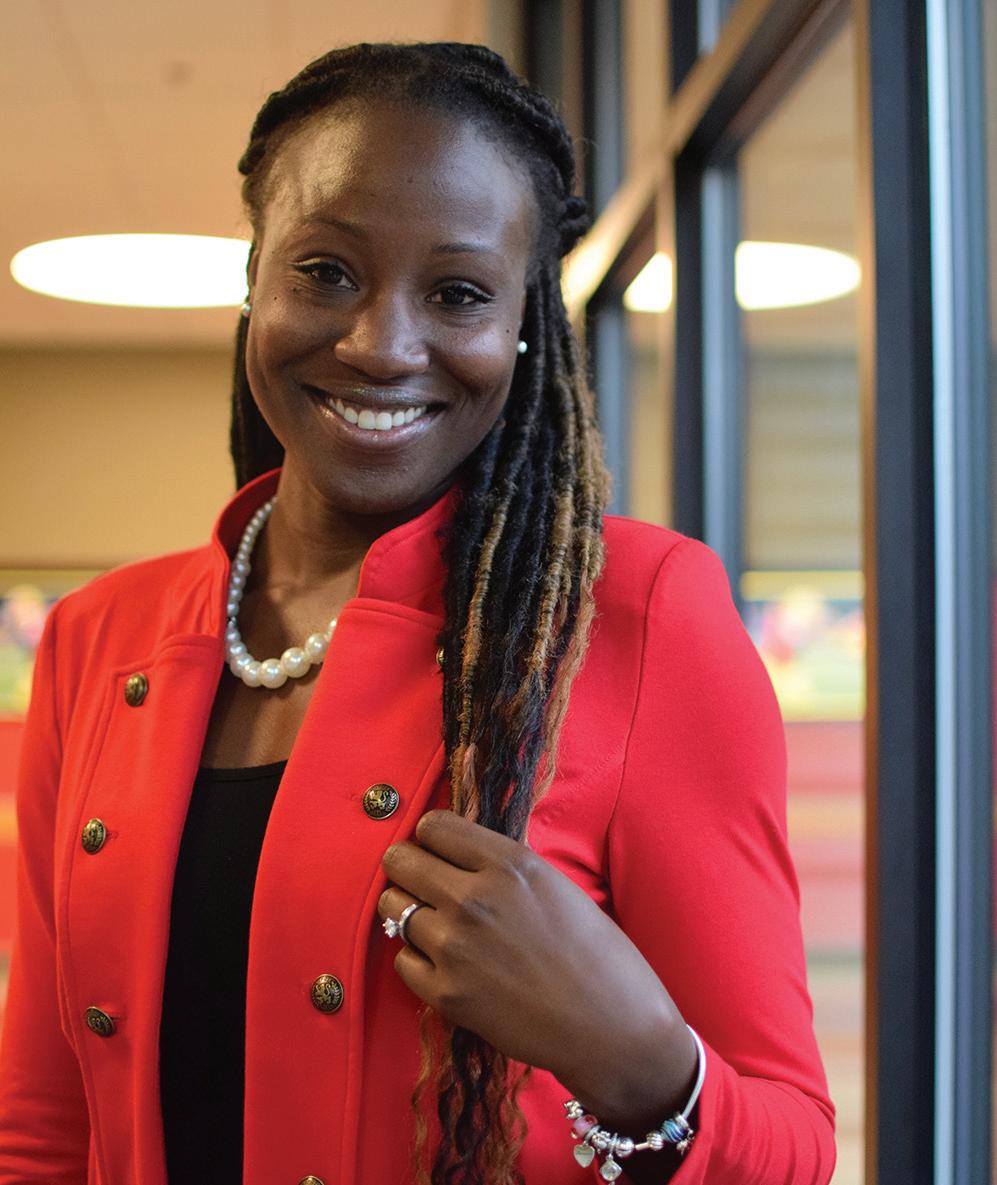

acceptance of natural hair since the origin of the natural hair movement, some forms of discrimination persist. According to Aziabor, her family members have experienced discrimination due to their natural hair.
“Before my older brother got dreads, he had this really big Afro. He would play soccer, and one of the (referees) claimed that his Afro was distracting other players or something,” Aziabor said. “(The referee) was like, ‘Either you don’t play or, the next time you do play, you have to cut your hair.’ My brother went to cut his hair, and (the referee) didn’t say anything after that.”
Perry believes it is important for all girls to believe in the beauty of their natural hair.
“If there are any (girls who aren’t confident in their natural hair at CCHS), have them come talk to me. I think that’s something I would’ve really appreciated in high school,” Perry said. “Just having someone talk about their journey, in terms of not loving who they were.” O

SUCCESSIVE SEASONS Above: MULTISPORT: Clarke Central High School varsity soccer player, cross country runner and swimmer Lena Cook, varsity football player and track and field runner Justin Hodges, varsity football player, wrestler and track and field runner Ntela Diekumpuna and varsity cross country runner and soccer player McKinley Campbell (left to right) stand in Billy Henderson Stadium. Participation in multiple sports may provide opportunities for cross training. “Obviously in football, you don’t have to have long term endurance because it’s mostly in short bursts, but the running, the jumping all those are similar and that’s kind of why I try to coach those two sports because I try to encourage individuals (and) tell them they kind of go hand in hand,” CCHS varsity football defensive coordinator and head track and field coach Justin Jones said. Photo by Krista Shumaker
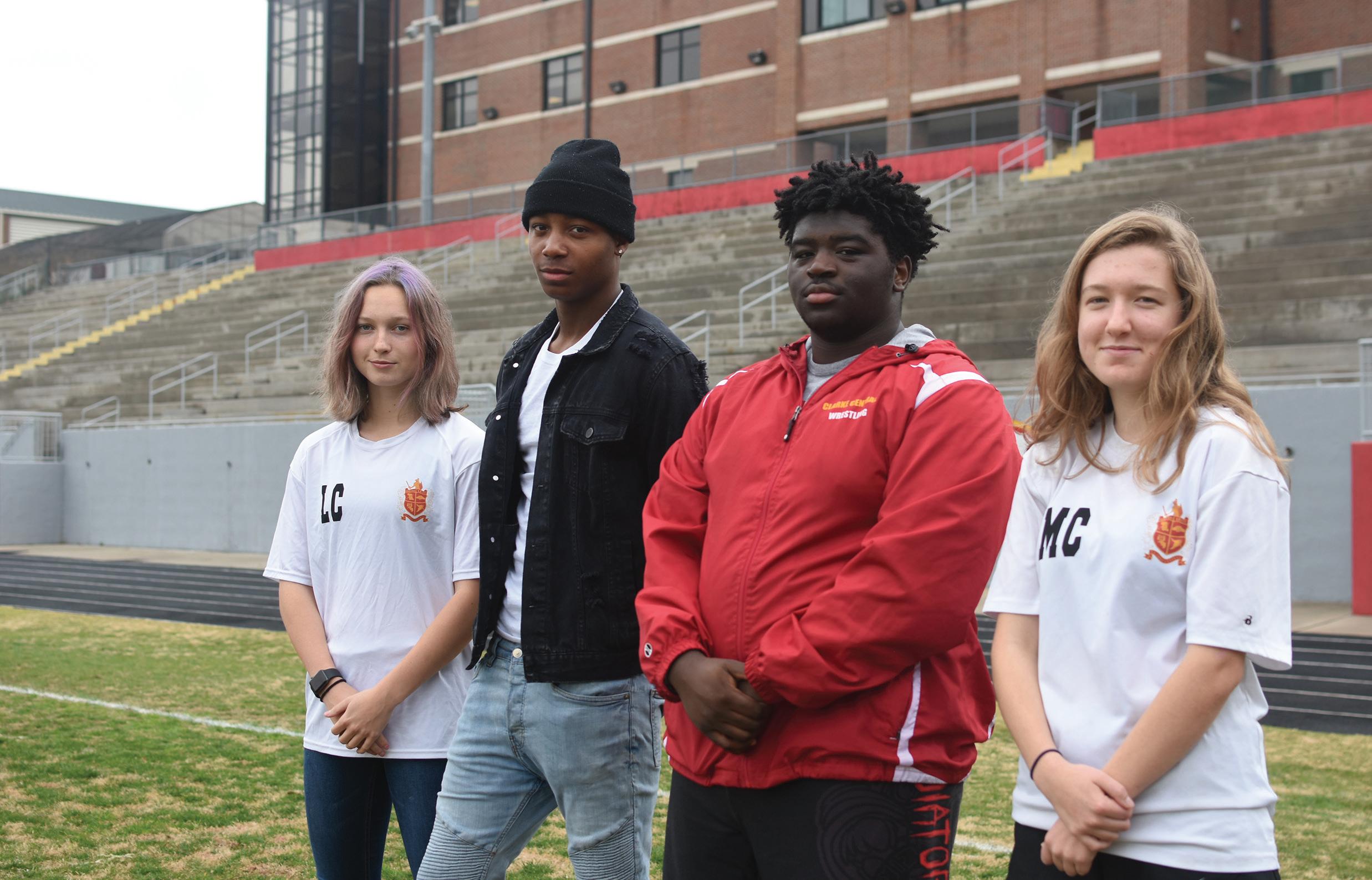
Clarke Central High School offers many sports to students, allowing them to participate in multiple throughout the year. Multisport athletes at CCHS face unique physical and academic challenges.
Throughout the school year, Clarke Central High School offers 14 sports to the student body. With a plethora of sports to choose from, CCHS students often participate in several, taking advantage of the three sport seasons: fall, winter and spring.
For some athletes, participating in multiple sports can be overwhelming, but CCHS junior Ntela Diekumpuna, a varsity football, wrestling and track and field athlete, believes that this opportunity allows for athletes to become more well-rounded. “(Participating in multiple sports) makes you stronger mentally because it drains a lot of you,” Diekumpuna said. “It makes you stronger physically because you’re putting your body through a lot of strain, and it forces you to do well with time BY GRETCHEN HINGER Sports Staffer
management, so you can balance out your sports, life and your academics.”
CCHS junior Justin Hodges, a varsity football and track and field athlete, believes participating in two sports provides him with cross training and skills that improve his performance in each sport.
“All (sports) connect in a certain way, especially for track. You need track (for football) because it helps with your speed and your mental and physical toughness, because track is tough,” Hodges said. “I believe you have to run track in order to play football because (football players) need speed and agility.”
CCHS sophomore Lena Cook, a varsity cross country runner, swimmer and soccer player, believes training for each sport supplements the others. “I think that cross-training has helped because certain sports complement other sports, like cross country and swimming go really well together because swimming’s low impact, but it also works a lot of the same muscles. Cross country also helps with soccer because you run in both,” Cook said.
While being a multisport athlete may come with benefits, Hodges, a former JV basketball player, feels that conflicts between the seasons of some sports can cause difficulties.
“First round playoffs (for football are) during basketball tryouts. Say we went to the third round, and the basketball season already started. We lost in the third round. Right after that, you want to take a break, you don’t want to go straight to basketball, so usually they give us like two weeks or a week just to chill,” Hodges said. “Then we come back and
then try out (for basketball) even though the season already started.”
CCHS varsity football defensive coordinator and head track and field coach Justin Jones also sees these conflicts and believes that coaches should be flexible to allow multisport athletes to flourish.
“Sometimes time conflicts come up. Maybe they have a travel competition in one of their sports, and then the sport that’s in season may have a competition on the same day, and sometimes they conflict,” Jones said. “A lot of times practices conflict because you want to try to get in after school. So, when it comes to coaches, in my opinion, (they) have to be flexible with athletes of that nature, and don’t force an athlete to choose (between sports) if they don’t necessarily have to.”
Cook’s mother Rachel Hopkins, a youth track and field and cross country coach for Sirius Athletics, believes time conflicts are the most challenging part of being a multisport athlete’s parent.
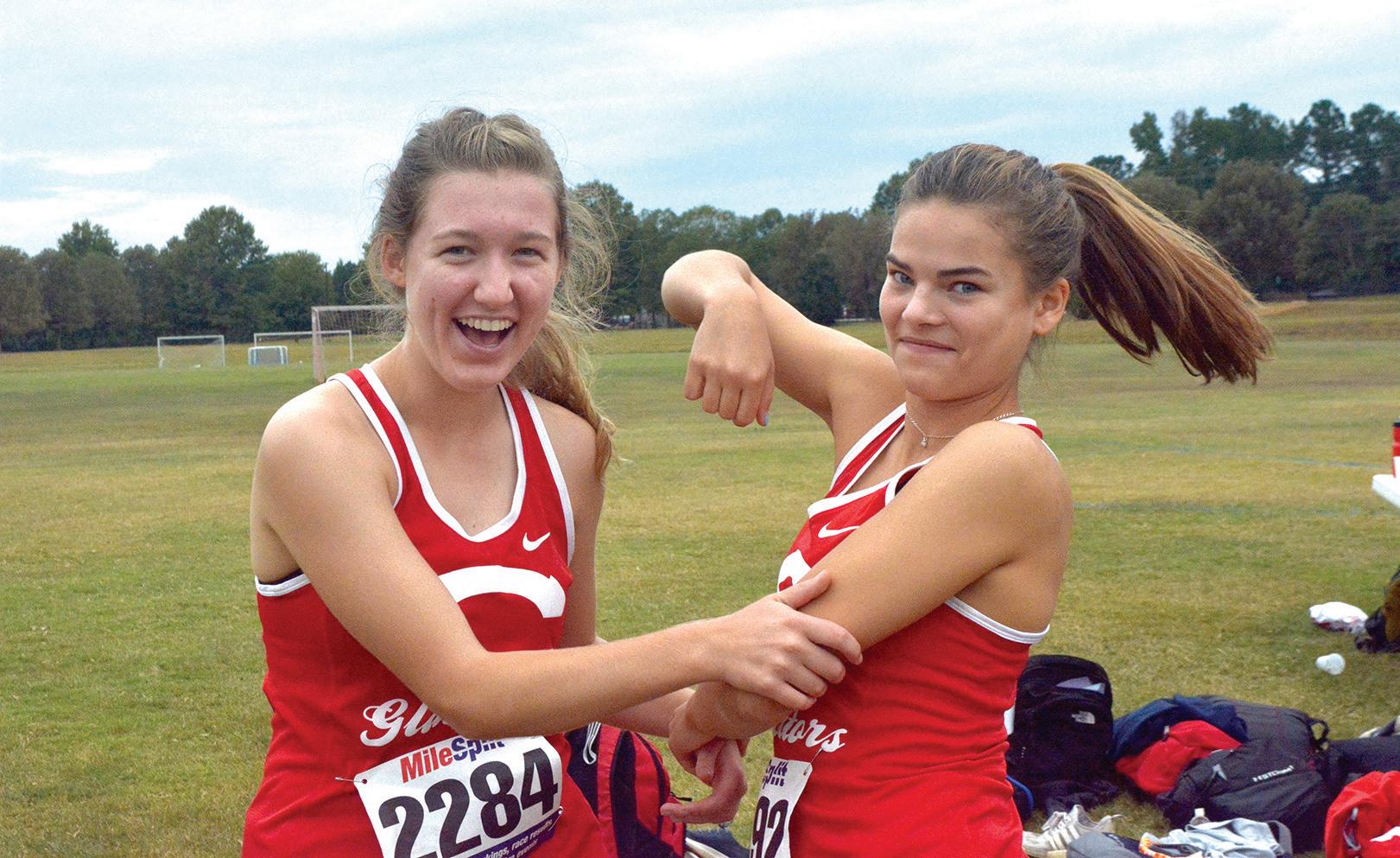
--McKINLEY CAMPBELL, CCHS junior
“(As a parent), you schedule around the competitions and practices and coordinating rides, etc. The biggest challenge is when the seasons overlap. When one season is still in their championship season, and another season is getting started, which happens with almost all of the sports, at least in high school, that poses a challenge,” Hopkins said. “Then you’ve got double practices, and there’s homework and making sure your child’s getting enough sleep.”
According to Cook, playing multiple sports not only causes conflict among the sports, but also interferes with her academics.
“(Playing multiple sports) makes it harder to set out a time to do my homework,” Cook said. “You’re practicing for two (to) four hours a day, and you’re definitely tired after practices, but it helps you realize how important managing your time is and not procrastinating.”
CCHS junior McKinley Campbell, a varsity soccer and cross country athlete, feels that participating in multiple sport seasons provides a valuable outlet for the stress that comes with school.
“(Playing multiple sports) challenges me. I’m still able to do all my work. I just have to be more efficient sometimes, and then sometimes you’re just so tired that it makes it so much harder to do the work,” Campbell said. “I also think it helps me academically because my mind is not on school. It’s like a release almost. I can kind of relax after school doing a sport and then go home and do the work.”
Top: RAMBUNCTIOUS RUNNERS: Clarke Central High School varsity cross country runner and soccer player McKinley Campbell and varsity cross country runner Allison Kurtz play fight at a CCHS cross country meet. Campbell has been participating in both cross country and soccer since eighth grade. “I love both of the sports, and I think if there’s two things or like multiple sports that you love, it’s important to play them,” Campbell said. Photo by Lilli Sams Bottom: FOCUSED FOOTBALLER: Clarke Central High School varsity football player and track and field runner Justin Hodges jumps over hurdles in Billy Henderson Stadium. Hodges has played football and basketball since he was four and started running track in high school. “Going from football to track, I could say for basketball, it’s like some people can just go straight into another game and they play another game just like that. For going to track, it’s tough. It’s like conditioning, but it’s a whole different story. Football conditioning isn’t anything like track conditioning,” Hodges said. Photo by Sophia Long

45 February 2020 Diekumpuna believes that, despite the challenges, playing multiple sports gives him a purpose during the school year.
“I feel like with the amount of open time (non-athletes have), I might not do the best things with my body in terms of what I should be eating or how often I work out,” Diekumpuna said. “Over the years, my body has become accustomed to playing multiple sports back to back to back, so it would kind of throw me off a bit mentally, as well. It would be like, ‘What do I do now?’”
Jones believes that playing multiple sports gives athletes vital experiences that can translate into other areas of life.
“You’re probably not gonna be a superstar in football, a superstar in basketball and a superstar in track and baseball. You have to humble yourself in one of those sports and become more of a team player,” Jones said. “I think that’s an invaluable experience if you are not necessarily being the same role on every single team. (Taking) on a lesser role (or) taking on a bigger role I think (is) important for everybody to learn, not just athletes.” O “It forces you to do well with time management so you can balance out your sports, life and your academics.” --Ntela Diekumpuna, CCHS junior
Lowering Costs
Sports teams at Clarke Central High School experiment with program fundraisers to lower the cost of participation for student athletes.
The Clarke Central High School athletic department provides basic support for all sports at CCHS. However, with limited funding spread between multiple sports, individual programs often engage in fundraisers to benefit their team.
“Basically, programs have the opportunity to raise additional money to help supplement finances to help with the expenses within their program,” CCHS athletic director Dr. Jon Ward said.
According to CCHS head boys soccer coach Chris Aiken, individual fundraisers for sports teams allow for flexibility when it comes to student athlete expenses. Boys soccer at CCHS requires participants to pay a $150 “player pack fee”, which obtains the players’ equipment for the season.
“I make them all wear red shirts, black shorts and black socks, which come in their player pack fee, because I do think looking like a team (and) practicing like a team helps you play like a team,” Aiken said. “I do think the player pack fee is important.”
According to Aiken, giving students the option to fundraise can help lower the personal cost of playing a sport at CCHS.
“For three years, we did a really successful fundraiser where Papa John’s would give me pizza cards for free. We could sell them, and when you sold BY MACKENZIE CAUDILL Senior Copy Editor
them you kept the full profit from that sale. So, if players wanted to, they have the option to sell them to make money,” Aiken said. “It would reduce their fee, and they could sell as many as they wanted to try to reduce their fee to zero. The great part of that fundraiser is it put a lot of responsibility back on the student-athlete to sell the fundraiser if you wanted to play for free. If you wanted to pay the $150 and not sell anything, that was your choice.”
Senior and boys varsity soccer player Alex Byrd believes that the price for playing soccer at CCHS is affordable for students.
“This year it is cheaper than it was in past years. I think that soccer is relatively affordable at CCHS. Club soccer, which most players participate in in springtime, is almost double or triple the price of high school,” Byrd said.
CCHS track and field also requires a participation fee to help finance new equipment. Head track coach Justin Jones believes CCHS is successful in keeping costs down for student athletes.
“I think, for the most part, especially within the surrounding areas, our school does a great job with keeping the cost down for our athletes. I highly doubt that a true coach would not allow kids to participate because they couldn’t afford a player pack fee or participation fee or something of that nature,” Jones said. “Compared to a lot of schools, I would say we do a pretty good job of keeping the cost down as much as possible.”
Below: COST CONFLICTS: Clarke Central High School sports provide fundraising opportunities to their students to help lower costs for athletics. According to CBS news, NBC News and numerous studies, the cost of playing a sport is an issue at the national level. Infographic by MacKenzie Caudill
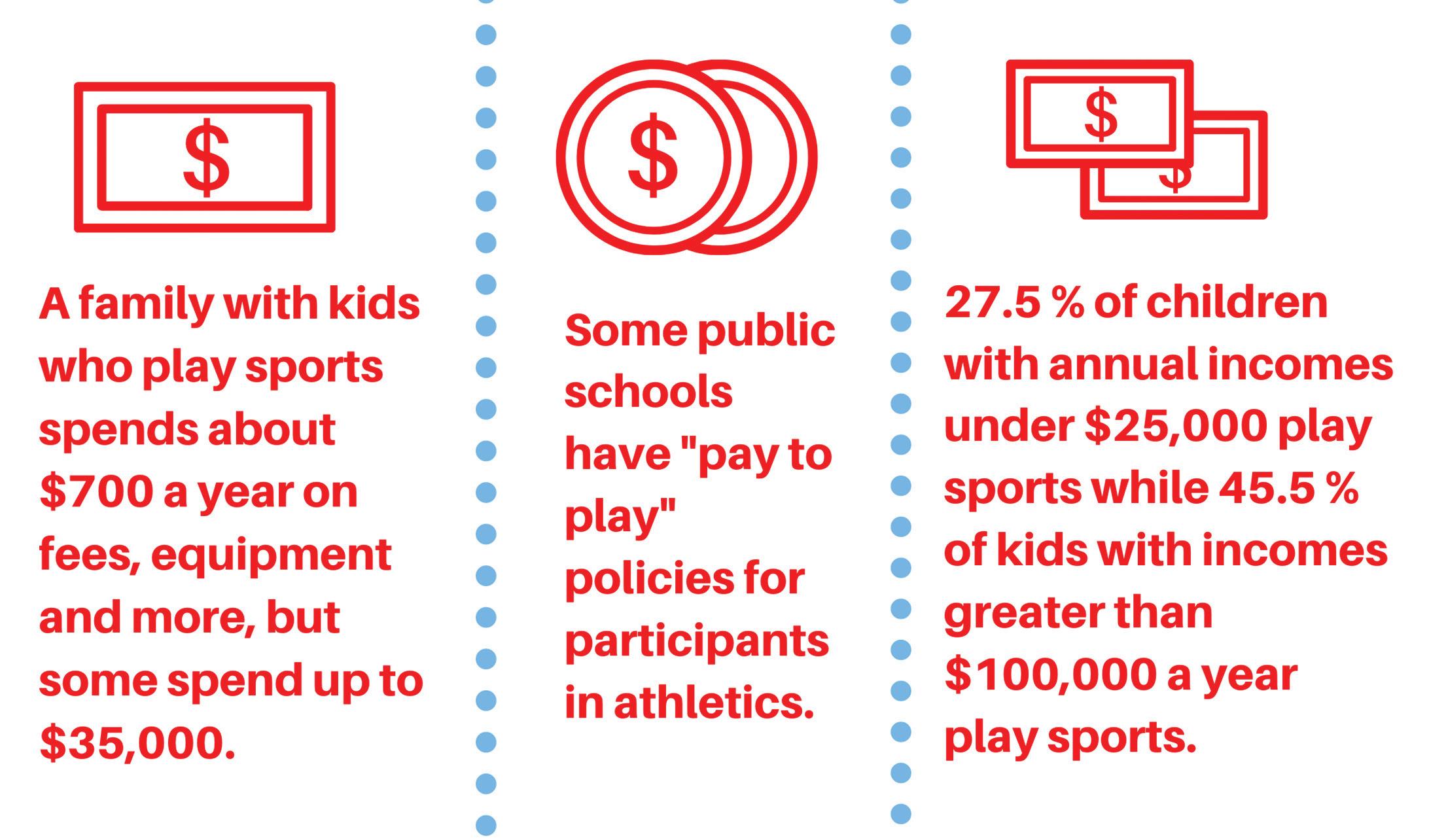
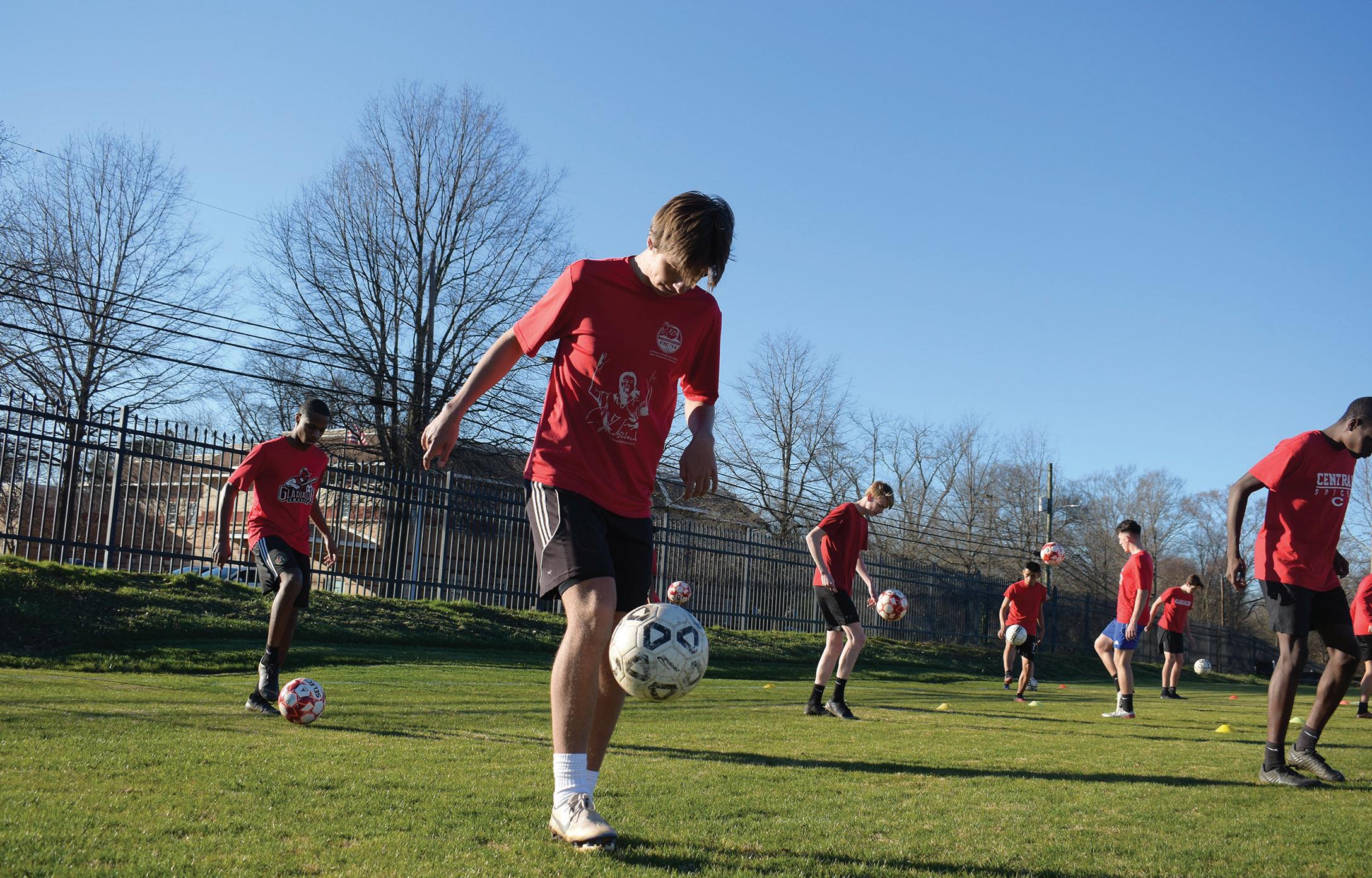
Above: KICKING COSTS: Clarke Central High School varsity soccer player Alex Byrd kicks a soccer ball at practice. According to Byrd, fundraisers allow for sports at CCHS to be affordable for students. “This year it is cheaper than it was in past years. I think that soccer is relatively affordable at CCHS. Club soccer, which most players participate in in springtime, is almost double or triple the price of high school,” Byrd said. Photo by Gerardo Navarro
CCHS sophomore and track and field runner Lily Meyers believes that fundraisers allow there to be virtually no cost for track runners.
“Mostly, it’s through buying merchandise for the team. So your costs for the team (are paid for) through buying merchandise and through fundraising,” Meyers said.
However, Meyers believes that it’s important to consider students’ situations when providing fundraising options.
“Not everyone at (CCHS) has money to play sports or to do all the activities that they would like to, so it’s important to give opportunities to everyone at the school for playing sports and to stay in shape,” Meyers said. “I think more options (for fundraisers would) be better for people to be able to make money to play on the team.”
Aiken also believes it’s especially important for CCHS to provide resources to student athletes to pay expenses.
“Obviously we can’t just be giving 40 kids Nike jackets that say ‘Clarke Cen
--Lily MEyers, CCHS track and field runner
tral Soccer.’ We have to get money from somewhere. But I do think that, at our particular school, we don’t want to make anything too expensive because there will be students that are afraid to ask for help, and we’re turning them away without even realizing it,” Aiken said.
According to CCHS head wrestling coach Shane McCord, fundraisers help reduce expenses for both students and programs overall.
“(Fundraising) makes it a lot easier on me and the school as far as making sure we have the necessary funds that go into play as far as tournament entries, hotel stays, paying for the bus, food and all this stuff,” McCord said. “It makes it a lot easier for us to just worry about wrestling rather than worry about (if ) we have enough money to do (these things).”
The wrestling team performs an annual fundraiser selling packages of meat. According to wrestler Ethan Shelden, a junior, reducing the cost of a sport through fundraisers supports his involvement.
“It means a lot to me, especially since if we sell five or more (meat packages), we don’t have to pay for our player package. That’s something that would benefit me and my family a lot, because money is a little tight right now,” Shelden said. “So if I could just sell five, it’d be nice for my mom to not have to worry about it.”
According to Jones, fundraisers ensure all students will have equal opportunities to participate in and use sports as motivation.
“A lot of times, (sports) can be kind of like a carrot you hold out in front of a kid’s face to encourage them to come to class to get good grades. And participation in athletics, to me, goes hand-in-hand with academics and arts in any school system, so you definitely don’t want to have it so expensive where you’re pretty much excluding (people), whether it be socioeconomic background or a certain race or gender or things of that nature. You definitely want to make it affordable,” Jones said. O





